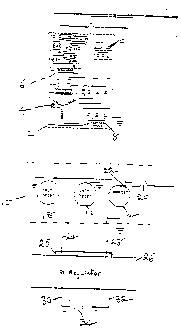Some of the information on this Web page has been provided by external sources. The Government of Canada is not responsible for the accuracy, reliability or currency of the information supplied by external sources. Users wishing to rely upon this information should consult directly with the source of the information. Content provided by external sources is not subject to official languages, privacy and accessibility requirements.
Any discrepancies in the text and image of the Claims and Abstract are due to differing posting times. Text of the Claims and Abstract are posted:
| (12) Patent: | (11) CA 2287117 |
|---|---|
| (54) English Title: | RV DC POWER SUPPLY |
| (54) French Title: | BLOC D'ALIMENTATION C.C. DE VEHICULE RECREATIF |
| Status: | Expired and beyond the Period of Reversal |
| (51) International Patent Classification (IPC): |
|
|---|---|
| (72) Inventors : |
|
| (73) Owners : |
|
| (71) Applicants : |
|
| (74) Agent: | R. WILLIAM WRAY & ASSOCIATES |
| (74) Associate agent: | |
| (45) Issued: | 2002-02-05 |
| (22) Filed Date: | 1999-10-19 |
| (41) Open to Public Inspection: | 2001-04-19 |
| Examination requested: | 1999-10-19 |
| Availability of licence: | N/A |
| Dedicated to the Public: | N/A |
| (25) Language of filing: | English |
| Patent Cooperation Treaty (PCT): | No |
|---|
| (30) Application Priority Data: | None |
|---|
There is described a method of charging a deep
cycle battery in a recreation vehicle (RV) having its own
wiring and RV converter connected to said deep cycle
battery with its own RV connector by providing a compact
portable gas powered charger unit utilizing a 4 Horse
Power engine, a 12 Volt - 63 Amp DC Delco alternator with
built in regulator and a control panel with an ON-OFF
toggle switch and connecting the output of the charger
unit to the RV connector and thus to the RV converter.
Note: Claims are shown in the official language in which they were submitted.
Note: Descriptions are shown in the official language in which they were submitted.

2024-08-01:As part of the Next Generation Patents (NGP) transition, the Canadian Patents Database (CPD) now contains a more detailed Event History, which replicates the Event Log of our new back-office solution.
Please note that "Inactive:" events refers to events no longer in use in our new back-office solution.
For a clearer understanding of the status of the application/patent presented on this page, the site Disclaimer , as well as the definitions for Patent , Event History , Maintenance Fee and Payment History should be consulted.
| Description | Date |
|---|---|
| Time Limit for Reversal Expired | 2008-10-20 |
| Letter Sent | 2007-10-19 |
| Inactive: IPC from MCD | 2006-03-12 |
| Grant by Issuance | 2002-02-05 |
| Inactive: Cover page published | 2002-02-04 |
| Inactive: Final fee received | 2001-11-13 |
| Pre-grant | 2001-11-13 |
| Notice of Allowance is Issued | 2001-05-31 |
| Letter Sent | 2001-05-31 |
| Notice of Allowance is Issued | 2001-05-31 |
| Inactive: Approved for allowance (AFA) | 2001-05-22 |
| Amendment Received - Voluntary Amendment | 2001-04-25 |
| Application Published (Open to Public Inspection) | 2001-04-19 |
| Inactive: Cover page published | 2001-04-18 |
| Amendment Received - Voluntary Amendment | 2001-03-26 |
| Inactive: S.30(2) Rules - Examiner requisition | 2000-09-26 |
| Amendment Received - Voluntary Amendment | 2000-08-28 |
| Inactive: S.30(2) Rules - Examiner requisition | 2000-06-13 |
| Amendment Received - Voluntary Amendment | 2000-05-17 |
| Inactive: S.30(2) Rules - Examiner requisition | 1999-12-17 |
| Inactive: IPC assigned | 1999-12-06 |
| Inactive: First IPC assigned | 1999-12-06 |
| Inactive: Filing certificate - RFE (English) | 1999-11-24 |
| Application Received - Regular National | 1999-11-19 |
| Request for Examination Requirements Determined Compliant | 1999-10-19 |
| All Requirements for Examination Determined Compliant | 1999-10-19 |
There is no abandonment history.
The last payment was received on 2001-10-12
Note : If the full payment has not been received on or before the date indicated, a further fee may be required which may be one of the following
Patent fees are adjusted on the 1st of January every year. The amounts above are the current amounts if received by December 31 of the current year.
Please refer to the CIPO
Patent Fees
web page to see all current fee amounts.
| Fee Type | Anniversary Year | Due Date | Paid Date |
|---|---|---|---|
| Application fee - small | 1999-10-19 | ||
| Request for examination - small | 1999-10-19 | ||
| MF (application, 2nd anniv.) - small | 02 | 2001-10-19 | 2001-10-12 |
| Final fee - small | 2001-11-13 | ||
| MF (patent, 3rd anniv.) - small | 2002-10-21 | 2002-09-30 | |
| MF (patent, 4th anniv.) - small | 2003-10-20 | 2003-10-14 | |
| MF (patent, 5th anniv.) - small | 2004-10-19 | 2004-10-18 | |
| MF (patent, 6th anniv.) - small | 2005-10-19 | 2005-10-17 | |
| MF (patent, 7th anniv.) - small | 2006-10-19 | 2006-10-16 |
Note: Records showing the ownership history in alphabetical order.
| Current Owners on Record |
|---|
| NILSSON DWIGHT |
| Past Owners on Record |
|---|
| None |